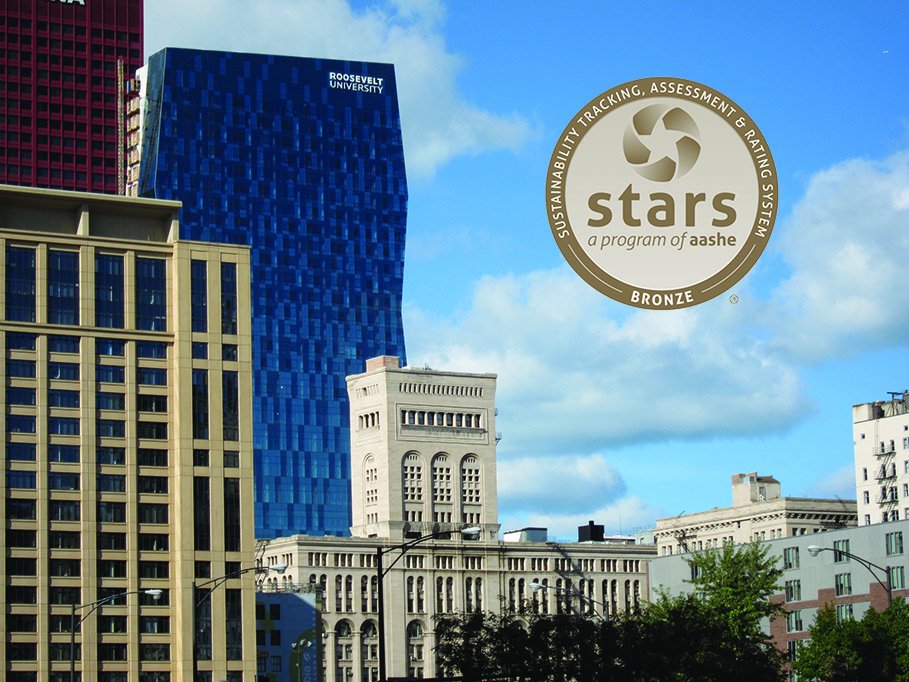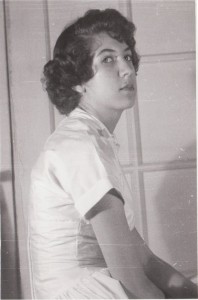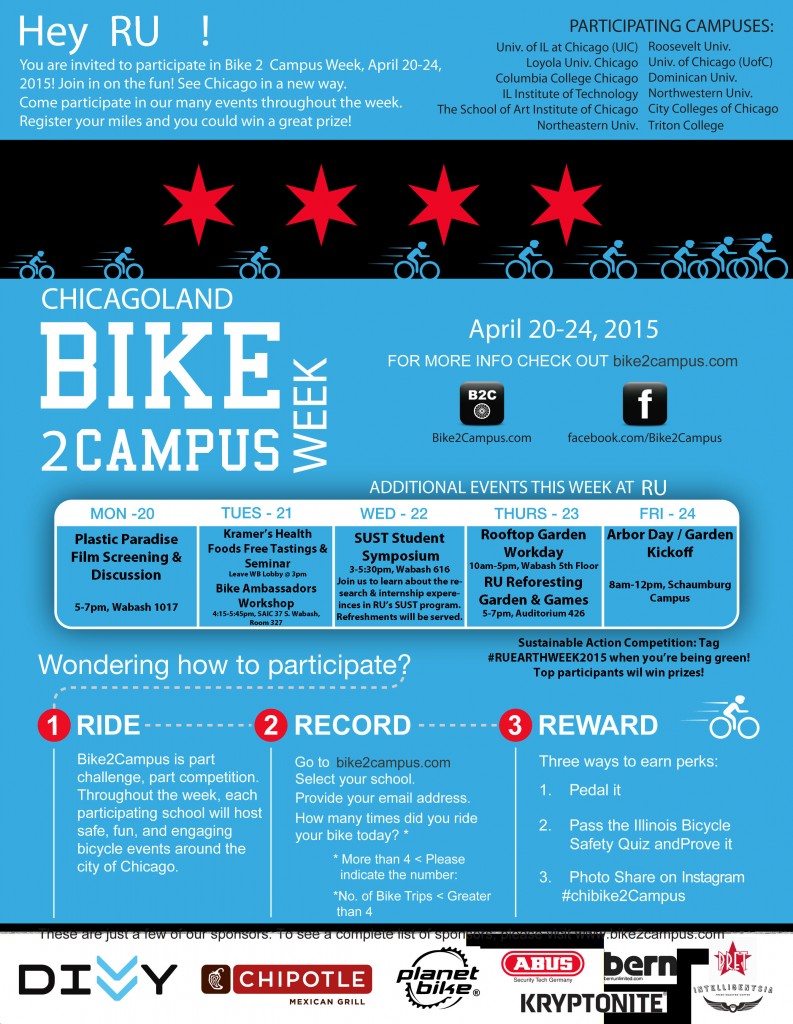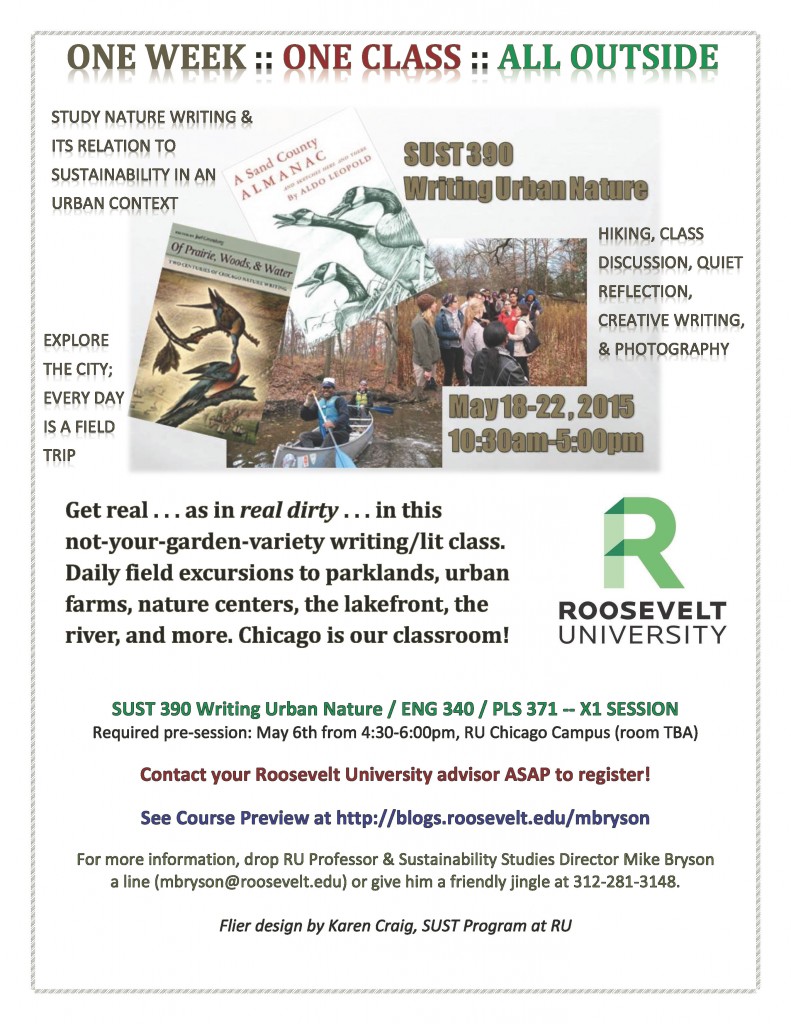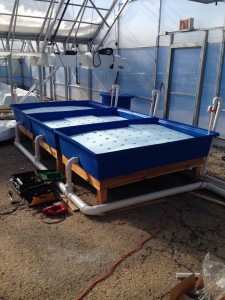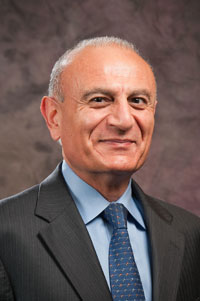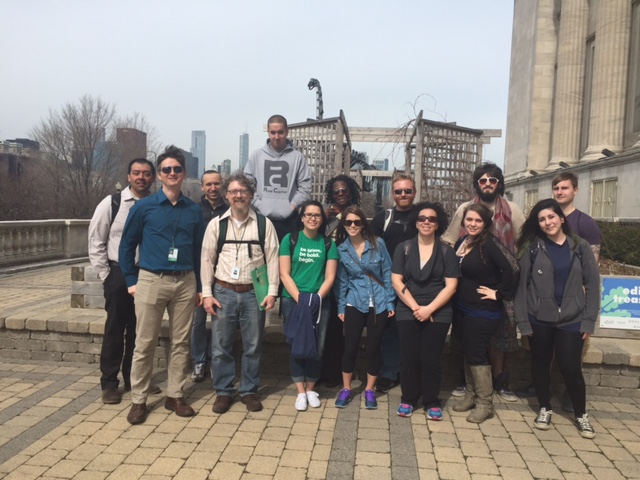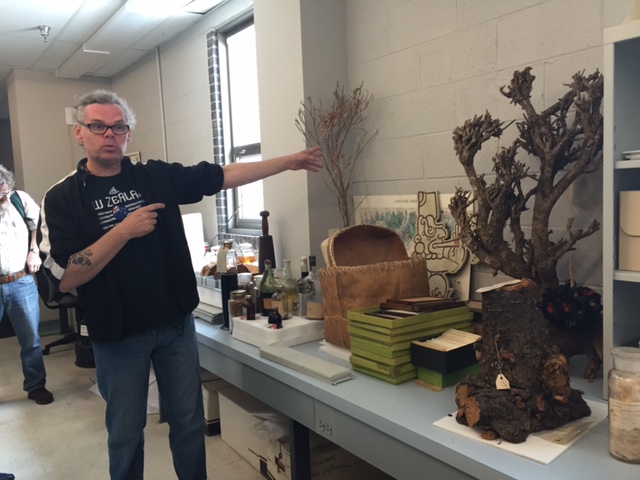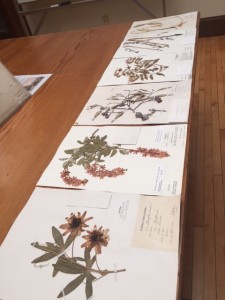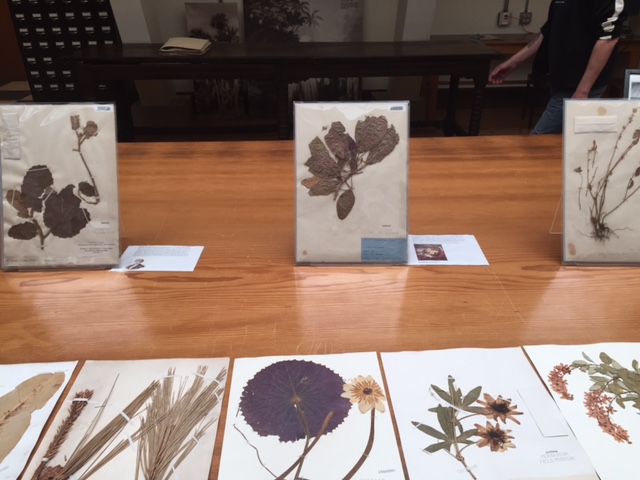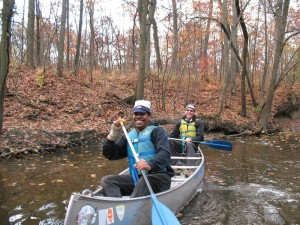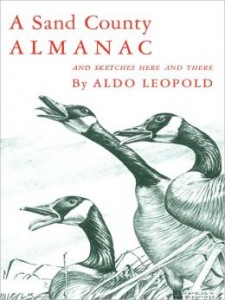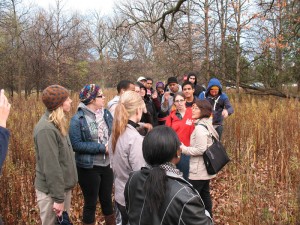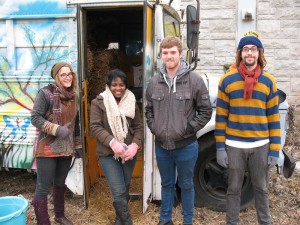 Tomorrow afternoon my SUST 340 Policy, Law, & Ethics class at Roosevelt University’s Chicago Campus proudly hosts a special presentation entitled “City Creatures: Urban Biodiversity in Chicago” at 3:30 p.m. in Roosevelt’s LEED-Gold Wabash Building, Room 1214. Dr. Gavin Van Horn of the Center for Humans and Nature will discuss his recent book, City Creatures: Animal Encounters in the Chicago Wilderness (University of Chicago Press), published in November 2015; and then engage in dialogue with my students and the RU community about urban biodiversity from the perspective of the environmental humanities.
Tomorrow afternoon my SUST 340 Policy, Law, & Ethics class at Roosevelt University’s Chicago Campus proudly hosts a special presentation entitled “City Creatures: Urban Biodiversity in Chicago” at 3:30 p.m. in Roosevelt’s LEED-Gold Wabash Building, Room 1214. Dr. Gavin Van Horn of the Center for Humans and Nature will discuss his recent book, City Creatures: Animal Encounters in the Chicago Wilderness (University of Chicago Press), published in November 2015; and then engage in dialogue with my students and the RU community about urban biodiversity from the perspective of the environmental humanities.
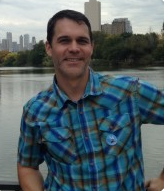 Dr. Van Horn is the co-editor of City Creatures and is the Director of Cultures of Conservation at the Center for Humans and Nature, as well as editor of the widely-read City Creatures blog. His work focuses particularly on how place-based values are developed and strengthened in dialogue with local landscapes. He continues to explore cultural perceptions of wildlife; place-based ethics; endangered species recovery, ethics, and policy; and the values involved in ecological restoration projects, community gardening, and wildlife management.
Dr. Van Horn is the co-editor of City Creatures and is the Director of Cultures of Conservation at the Center for Humans and Nature, as well as editor of the widely-read City Creatures blog. His work focuses particularly on how place-based values are developed and strengthened in dialogue with local landscapes. He continues to explore cultural perceptions of wildlife; place-based ethics; endangered species recovery, ethics, and policy; and the values involved in ecological restoration projects, community gardening, and wildlife management.
This special event is free and open to the public, and is hosted by students in SUST 340 Policy, Law, & Ethics. A limited number of signed copies will be available for purchase ($30 cash) and discount order forms will be available.
Videoconference Option: For those who cannot attend in person, the City Creatures event will be video- and teleconferenced live via Zoom as well as recorded, so that you may watch and/or listen from anywhere in the world. Login information is here:
Topic: City Creatures at RU Presentation 11 Apr 2016
Time: Apr 12, 2016 3:30 PM (GMT-5:00) Central Time (US and Canada)
- Join from PC, Mac, Linux, iOS or Android: https://roosevelt.zoom.us/j/111170694
- Or iPhone one-tap: 16465588656,111170694# or 14086380968,111170694#
- Or Telephone:
+1 877 369 0926 (US Toll Free)
+1 888 974 9888 (US Toll Free)
Meeting ID: 111 170 694
International numbers available: https://roosevelt.zoom.us/zoomconference?m=sRfRPmWGZFFr0xGI6lrJk6t13V5cLneM
More on City Creatures from The University of Chicago Press website:
We usually think of cities as the domain of humans—but we are just one of thousands of species that call the urban landscape home. Chicago residents knowingly move among familiar creatures like squirrels, pigeons, and dogs, but might be surprised to learn about all the leafhoppers and water bears, black-crowned night herons and bison, beavers and massasauga rattlesnakes that are living alongside them. City Creatures introduces readers to an astonishing diversity of urban wildlife with a unique and accessible mix of essays, poetry, paintings, and photographs.
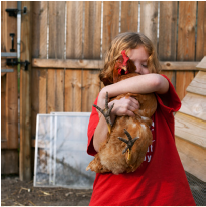 The contributors bring a story-based approach to this urban safari, taking readers on birding expeditions to the Magic Hedge at Montrose Harbor on the North Side, canoe trips down the South Fork of the Chicago River (better known as Bubbly Creek), and insect-collecting forays or restoration work days in the suburban forest preserves.
The contributors bring a story-based approach to this urban safari, taking readers on birding expeditions to the Magic Hedge at Montrose Harbor on the North Side, canoe trips down the South Fork of the Chicago River (better known as Bubbly Creek), and insect-collecting forays or restoration work days in the suburban forest preserves.
The book is organized into six sections, each highlighting one type of place in which people might encounter animals in the city and suburbs. For example, schoolyard chickens and warrior wasps populate “Backyard Diversity,” live giraffes loom at the zoo and taxidermy-in-progress pheasants fascinate museum-goers in “Animals on Display,” and a chorus of deep-freeze frogs awaits in “Water Worlds.”
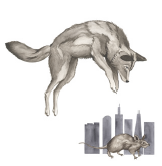 Although the book is rooted in Chicago’s landscape, nature lovers from cities around the globe will find a wealth of urban animal encounters that will open their senses to a new world that has been there all along. Its powerful combination of insightful narratives, numinous poetry, and full-color art throughout will help readers see the city—and the creatures who share it with us—in an entirely new light.
Although the book is rooted in Chicago’s landscape, nature lovers from cities around the globe will find a wealth of urban animal encounters that will open their senses to a new world that has been there all along. Its powerful combination of insightful narratives, numinous poetry, and full-color art throughout will help readers see the city—and the creatures who share it with us—in an entirely new light.
